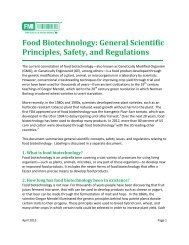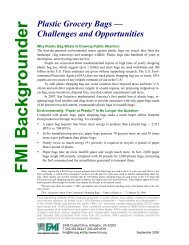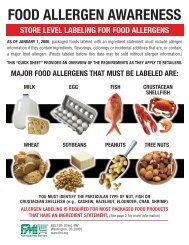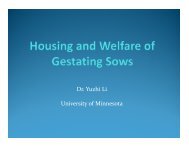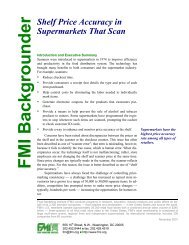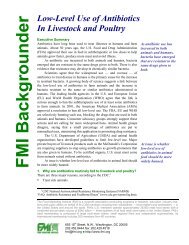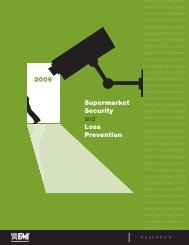Consumer Shopping Habits for Wellness and Environmentally ...
Consumer Shopping Habits for Wellness and Environmentally ...
Consumer Shopping Habits for Wellness and Environmentally ...
Create successful ePaper yourself
Turn your PDF publications into a flip-book with our unique Google optimized e-Paper software.
Geographic Distribution of H+W <strong>Consumer</strong>s <strong>and</strong> Demographic Differences<br />
As we mentioned above in relation to social networks, some regions have a higher density (or<br />
―critical mass‖) of more involved H+W consumers than others. While there are notable differences<br />
between various regions, the differences are not as vast as many in industry imagine, with major<br />
differences only in the percentage of Core consumers. The Core consumer is more likely to be living<br />
in the Pacific states of Cali<strong>for</strong>nia, Oregon, Washington, <strong>and</strong> Alaska. The US region with the most<br />
Periphery consumers is New Engl<strong>and</strong>. In New Engl<strong>and</strong>, 38% of consumers are considered<br />
Periphery <strong>and</strong> only 3% are Core. In all regions, however, there are quite substantial proportions of<br />
Mid-level consumers.<br />
Figure 17 – Proportion of H+W <strong>Consumer</strong>s by Region<br />
Pacific<br />
24%<br />
53%<br />
23%<br />
East South Central<br />
24%<br />
57%<br />
19%<br />
West South Central<br />
21%<br />
61%<br />
18%<br />
South Atlantic<br />
23%<br />
63%<br />
14%<br />
Middle Atlantic<br />
20%<br />
67%<br />
13%<br />
East North Central<br />
28%<br />
64%<br />
8%<br />
West North Central<br />
28%<br />
64%<br />
8%<br />
Mountain<br />
24%<br />
72%<br />
4%<br />
New Engl<strong>and</strong><br />
38%<br />
60%<br />
3%<br />
Periphery Mid-level Core<br />
Q2: “What state do you live in?” | Base: Primary household shoppers (n=2176; 166 Core, 1408 Mid-level, 602 Periphery). | Source:<br />
GMDC 2009 Survey, Mar. 2009.<br />
Other than region, we have not found significant differences in demographics with respect to H+W<br />
lifestyle adoption, other than at extreme edges of the income <strong>and</strong> education scales, as shown in the<br />
following figure. <strong>Consumer</strong>s living in true poverty of course have more pressing concerns than H+W,<br />
<strong>and</strong> consumers at the opposite end of the income scale often purchase ―high end‖ (often organic<br />
<strong>and</strong>/or high quality) products in many categories simply because they can, or to be trendy, without<br />
necessarily having an emotional commitment to those products. So, while they may outwardly<br />
appear to be Core, <strong>and</strong> often test as such quantitatively, they may not be Core in a substantive<br />
sense. As a result there are slightly more Core consumers among higher income groups. Education<br />
also tends to correlate with income to some degree so there are more Periphery consumers among<br />
those with less than high school education. But throughout all demographics, we still see that the<br />
Mid-level segment is the largest consumer group, <strong>and</strong> that, overall, the differences are not nearly as<br />
33




